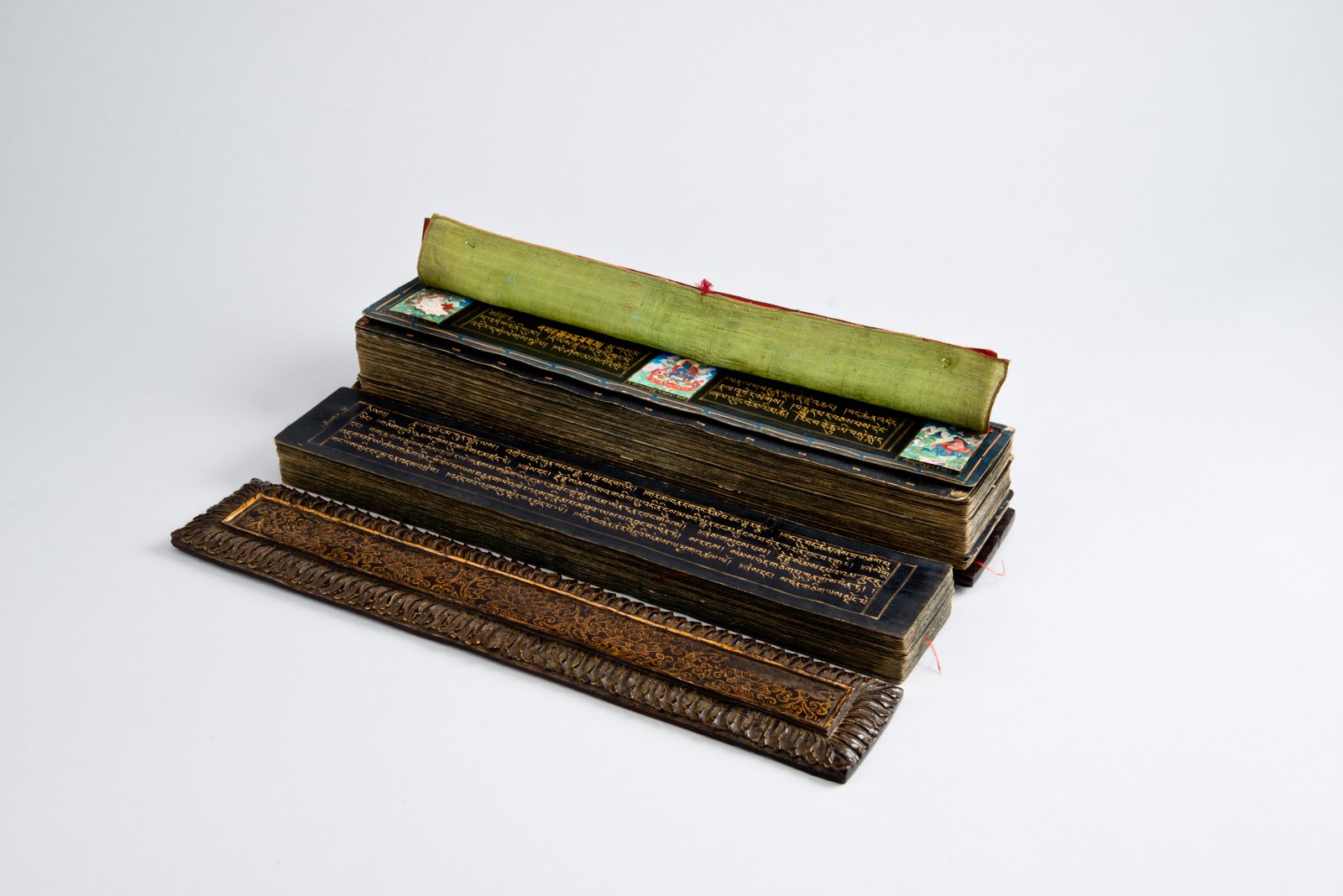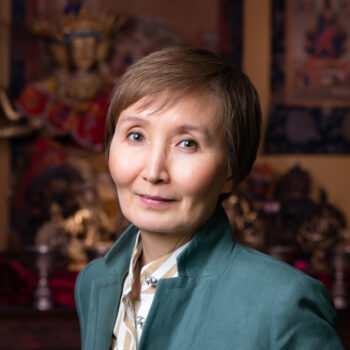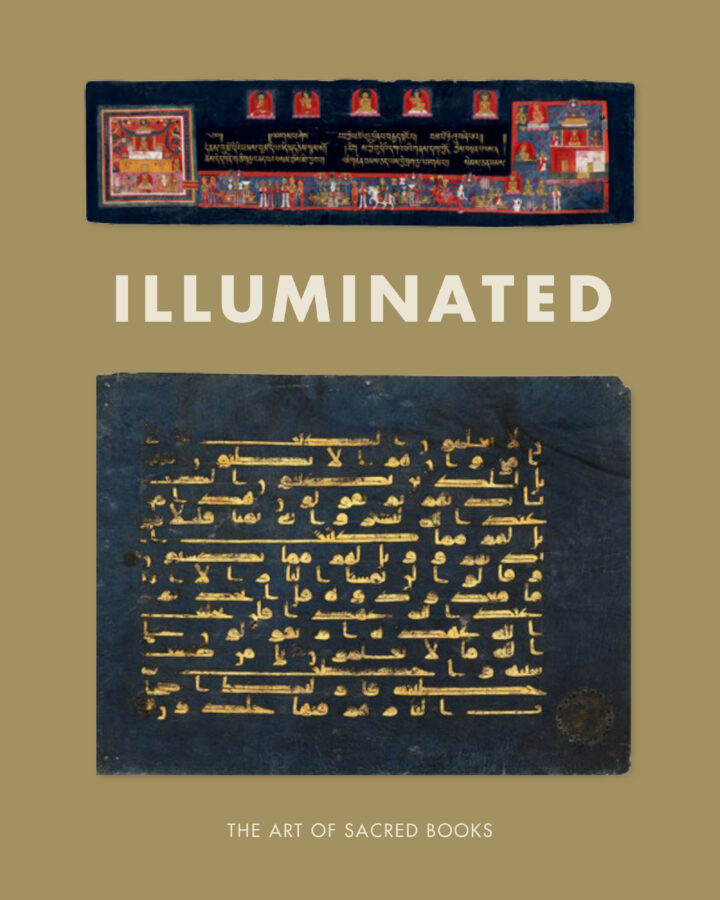Illuminated: The Art of Sacred Books explores the aesthetic and technological approaches used in creating and adorning sacred books from a variety of cultures and presents Tibetan sacred books in a broad cross-cultural context. Among the featured objects are several never-before-displayed illuminated Tibetan manuscript pages and complete books dating to as early as the 13th century, which are written in gold and silver on dark blue and black paper of various sizes in the traditional Tibetan book format.
Through an in-depth examination of the comparable attitudes found in the presented objects, the exhibition provides new insights into what is known as the “culture of the book.” Other highlights from the exhibition include a bifolio of the famous “Blue Qur’an,” written in gold on indigo-colored velum in Tunisia between the 9th and 10th centuries; a Japanese Buddhist sutra scroll written in gold on indigo paper in 1720; medieval Gospels written in gold letters on blue and purple parchment; illuminated pages of Jain sutras; and illustrated Indian Hindu classics.
In addition to these various lavishly decorated books of different faiths, created in diverse formats and materials, the exhibition also includes adorned book covers that are painted, carved from wood, and made of leather or silver repoussé, as well as other objects designated as sacred and recognized for their value as both art and devotional objects.
Curated by Elena Pakhoutova and Agnieszka Helman-Wazny


